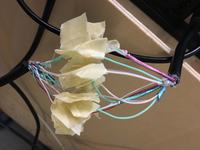cyberctrl
Junior Member level 3

I am doing an experimental project passing HDMI signal over ethernet cable using two of these:
https://www.amazon.com/MOTONG-Netwo...479869101&sr=8-15&keywords=hdmi+over+ethernet
When I cut and solder one of the 8 wires of one of the two ethernet cables that is in the middle I get no signal anymore. Can someone please explain why this is happening?
https://www.amazon.com/MOTONG-Netwo...479869101&sr=8-15&keywords=hdmi+over+ethernet
When I cut and solder one of the 8 wires of one of the two ethernet cables that is in the middle I get no signal anymore. Can someone please explain why this is happening?


